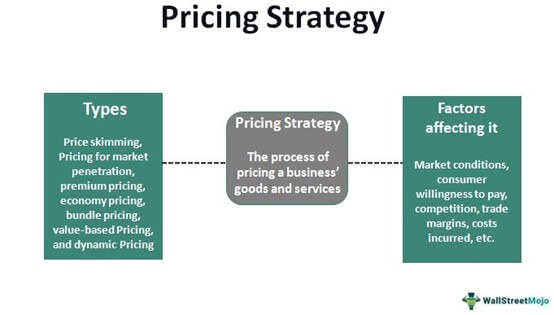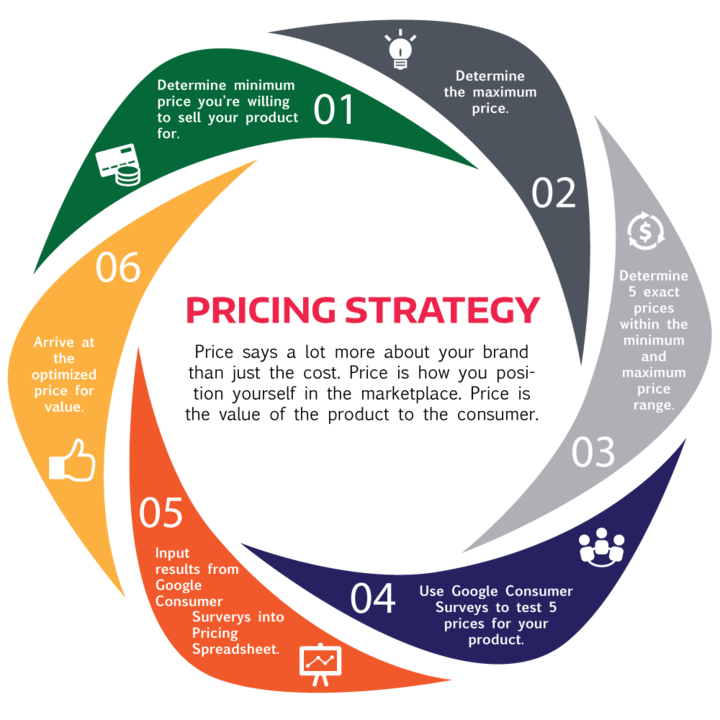Just How a Solid Pricing Strategy Can Increase Client Commitment and Retention
Just How a Solid Pricing Strategy Can Increase Client Commitment and Retention
Blog Article

Master Effective Pricing Techniques to Take Full Advantage Of Revenue
In the ever-evolving landscape of commerce, mastering efficient rates methods is necessary for businesses intending to maximize revenue. A nuanced understanding of pricing psychology can substantially influence customer behavior and investing in decisions.
Understanding Pricing Psychology
Comprehending prices psychology is important for services aiming to maximize their prices strategies. This field takes a look at just how customers regard prices and just how these assumptions affect their investing in decisions. Trick principles in pricing psychology include the anchoring effect, where the first rate provided offers as a recommendation point for consumers, and the principle of price sensitivity, which varies among different client sectors.
In addition, services can utilize the concept of viewed worth, where the viewed advantages of a services or product can justify a greater cost factor. As an example, costs pricing can develop a mood of exclusivity, bring in consumers that connect higher costs with premium quality. On the other hand, mental rates, such as establishing a cost at $9.99 rather than $10, can dramatically impact customer actions by making rates appear extra eye-catching.
In addition, deficiency and necessity can improve the perceived value of products, triggering quicker investing in decisions. Recognizing these mental triggers enables companies to develop pricing techniques that not only drive sales but likewise foster client commitment. Therefore, mastering pricing psychology is essential for efficient prices technique formulation, causing enhanced profitability and market positioning.
Executing Value-Based Pricing

Next, section your customers based on their desire to pay and the value they regard. By doing so, you can customize offerings and prices approaches to align with different sections.
After gathering insights, set costs that show the optimum amount a client is ready to pay, ensuring that they view a fair exchange for the worth obtained. Connect the worth suggestion effectively, highlighting the benefits and differentiators of your offering. Constantly keep an eye on market conditions and consumer feedback to fine-tune your pricing approach over time. By executing value-based prices, organizations can enhance productivity while fostering lasting client commitment.
Discovering Dynamic Prices Versions
In today's swiftly changing market landscape, vibrant pricing models have become an effective strategy for businesses seeking to enhance earnings and reply to variations sought after. These versions allow companies to adjust their prices in real-time based upon different factors such as customer actions, market trends, and supply degrees. By leveraging information analytics and formulas, services can determine optimum pricing points that take full advantage of sales while continuing to be affordable.
Dynamic prices can take numerous kinds, consisting of time-based rates, where prices fluctuate based on time of day or season, and demand-based pricing, which adjusts prices according to current consumer demand. This flexibility not just improves profitability yet likewise boosts consumer satisfaction by offering prices that mirror real-time market problems.
Implementing dynamic rates needs a durable technical framework and a deep understanding of consumer segments. Transparent communication regarding prices adjustments can help reduce consumer discontentment and foster trust fund, inevitably leading to sustained productivity in a competitive marketplace.
Analyzing Competitor Pricing
Checking rival rates is essential for services aiming to keep an one-upmanship in their respective markets. By assessing rivals' pricing methods, business can identify market patterns, comprehend consumer choices, and readjust their pricing as necessary. This evaluation includes celebration information on rivals' prices, promotional techniques, and product offerings to educate rates decisions.
To effectively analyze rival prices, services need to use various devices and techniques, such as cost tracking software, market research reports, and customer responses. This information can reveal how competitors place their services and products, permitting organizations to differentiate their offerings or embrace similar strategies to continue site here to be appropriate.
Additionally, it is critical to categorize rivals right into indirect and straight rivals. Straight competitors supply similar items or services, while indirect rivals may satisfy the same customer demand with different remedies. Comprehending the nuances in between these groups will certainly allow companies to tailor their pricing methods better.
Inevitably, continuous rival rates evaluation is crucial for making enlightened prices choices. It enables organizations to remain nimble in action to market changes, ensuring they can confiscate chances and alleviate risks related to rates approaches.
Reviewing Rates Performance
Understanding exactly how competitor pricing affects market dynamics results in a natural concentrate on reviewing pricing performance within one's own business. This examination is critical for identifying areas of stamina and possibilities for renovation, inevitably enhancing profitability.

Furthermore, performing normal prices audits can disclose inconsistencies in between anticipated and real performance. This entails contrasting pricing information across different go segments and channels to understand variations and determine trends. Furthermore, integrating customer feedback can supply insights into perceived value versus actual prices, guaranteeing positioning with market expectations.
Lastly, leveraging data analytics devices can promote deeper understandings right into prices performance, allowing companies to make data-driven modifications (Pricing Strategy). By consistently assessing pricing performance, organizations can adapt to market adjustments and maximize their methods, making certain continual success in a competitive landscape
Conclusion
Reliable rates techniques are important for making the most of revenue in an open market. By pop over to this web-site leveraging rates psychology, companies can boost perceived worth and tailor prices to varied customer sectors. The fostering of value-based and vibrant rates versions facilitates real-time changes based on demand and client desire to pay. In addition, continuous evaluation of rival rates and performance metrics makes sure strategic dexterity. Eventually, a thorough method to pricing not just drives profitability but also promotes customer fulfillment and commitment.
Comprehending pricing psychology is crucial for businesses intending to maximize their prices methods. Recognizing these mental triggers enables companies to formulate rates strategies that not only drive sales however also foster client loyalty. Thus, grasping prices psychology is important for efficient rates method formula, leading to improved success and market positioning.
By assessing rivals' prices strategies, firms can determine market trends, understand customer choices, and readjust their prices accordingly. By leveraging pricing psychology, organizations can boost perceived value and tailor prices to diverse consumer segments.
Report this page